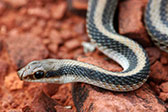
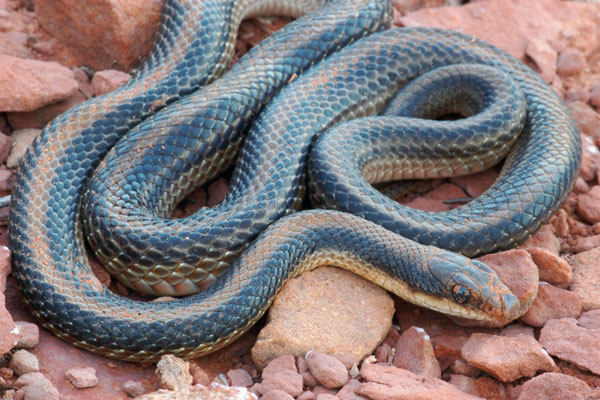
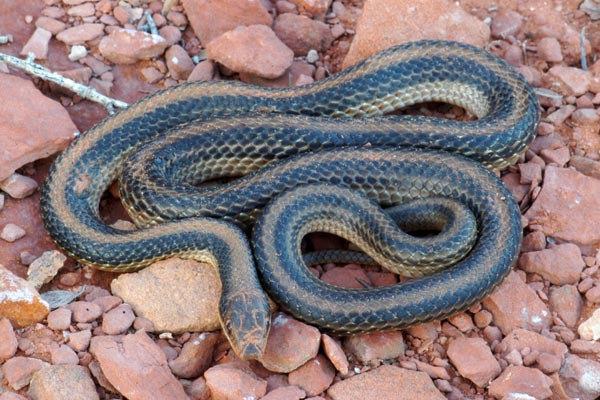
When I was ascertaining this snake's identity, I noticed that according to Stebbins there were two species of patch-nosed snakes recorded for the Sedona area, S. hexalepis and S. grahamiae. I thought this one was S. hexalepis but didn't feel confident about it, so I wrote to Tom Brennan of Arizona State University, who runs the terrific Reptiles of Arizona site. He graciously got me in touch with herpetologist Andy Holycross, who told me that S. grahamiae had been reported only a handful of times in this general area, and after examining some close-up photos determined that the snake I found is most likely S. hexalepis. One of the distinguishing factors is the number of supralabials (scales touching the upper lip): S. hexalepis generally has 9 and S. grahamiae generally has 8. Though the red dust on this snake obscures the count, on a close-up it's clear that this snake has 9 supralabials.

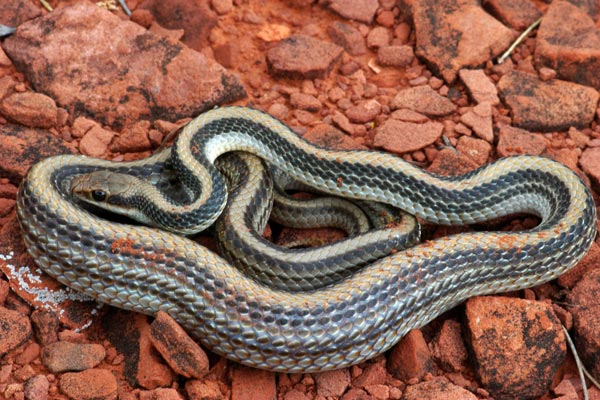
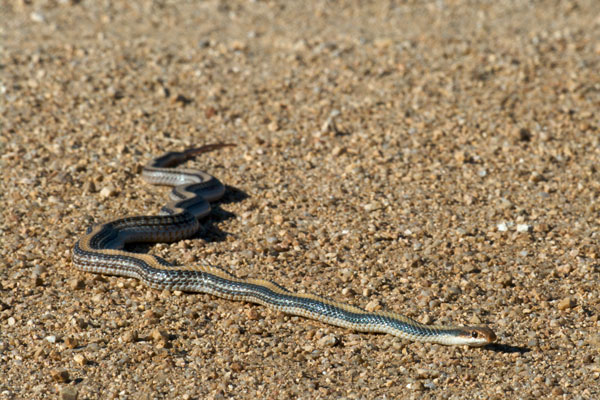
- Bartlett, R. D., Tennant, A. 2000. Snakes of North America, Western Region
- Brennan, T. C. and Holycross, A. T. 2006. A Field Guide to Amphibians and Reptiles in Arizona
- Brown, P. R. 1997. A Field Guide to Snakes of California
- Crother, B. I. (ed.) 2017. Scientific and Standard English Names of Amphibians and Reptiles of North America North of Mexico, with Comments Regarding Confidence in Our Understanding, Eighth Edition
- Degenhardt, W. G., Painter, C. W., Price, A. H. 1996. Amphibians & Reptiles of New Mexico
- Dixon, J. R., Werler, J. E. 2000. Texas Snakes: A Field Guide
- Stebbins, R. C. 2003. Peterson Field Guide to Western Reptiles and Amphibians, Third Edition